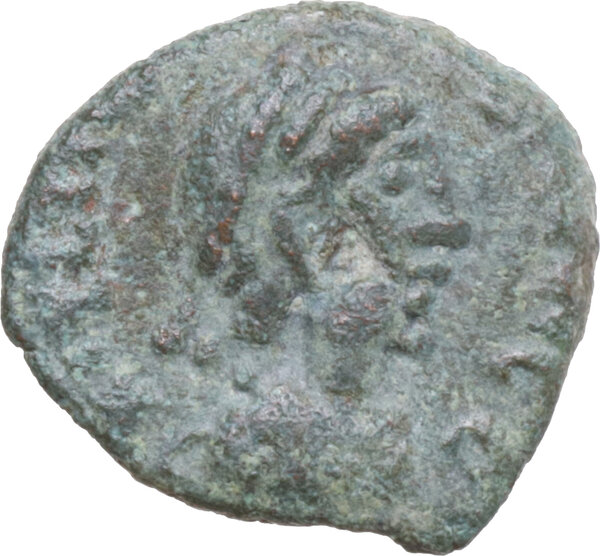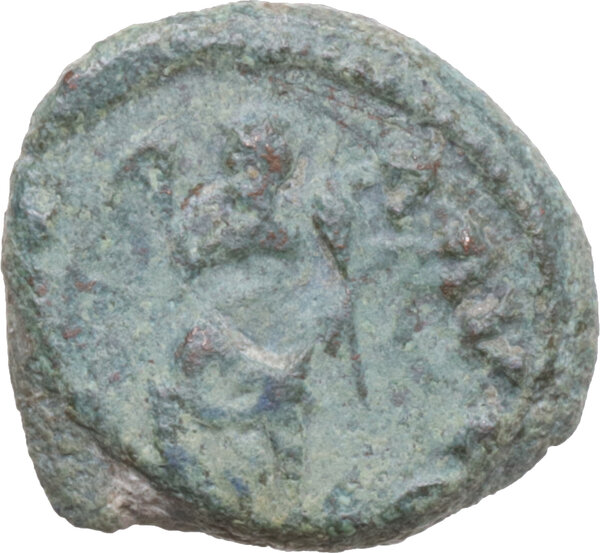









Lot 610:
Majorian (457-461). AE 13.5 mm. Ravenna or Mediolanum mint. Obv. Pearl-diademed, draped and cuirassed bust right. Rev. VICTORIA AVGG. Victory standing left, holding wreath and palm branch. RIC X 2641-4. 1.91 g. 13.5 mm. RR. Green patina. Nice portrait. VF. Julius Valerius Majorian owned his name to his maternal grandfather, who had been magister militum in Illyricum in the 370s. He had himself served with distinction under Aetius, and in 455 he was considered a possible successor of Valentinian III. Presumably, when he and Ricimer deposed Avitus in October 456, it was intended that he should succeed him, but according to Sidonius Apollinaris, who knew him personally, he was reluctant to assume the burden, and an interregnum of six months followed during which he and Ricimer were in fact masters of the West but the Emperors were nominally Marcian and, after January 457, Leo. Even after he had been proclaimed emperor by the army outside Rome on 1st April 457, he continued to call himself no more than magister militum, and he was not proclaimed at Ravenna until 28 December 457. Just as Avitus had not been acceptable in Italy, so Majorian was not acceptable in Gaul. In 458 he led an army of German mercenaries into the Rhone valley, made himself master of Lyon, which had accepted a Burgundian garrison, and having defeated the Visigoths outside Arles, he compelled them to come to terms. But his Gallic successes in 458/9 were followed by misfortunes in Spain in 460/1. Two naval expeditions planned against Gaiseric met with disaster, and he was forced to return to Italy with no accomplishment to his credit. Such successes as he had had, however, aroused the suspicions of Ricimer: Majorian, who had deserved better things, was seized by treachery at Tortona on 2 August, deposed, and beheaded five days later. AE4 were struck under Majorian at Milan, Ravenna and Rome […] The coins of all three mints are larger and substantially heavier than any Western bronze coins had been since the reign of Honorius. Lacam (1988, 220) has suggested that these unusually high weights are to be explained by Ricimer's need for betterc coin to offer Gundobald's mercenaries when preparing for his campaign against the Vandals, but it is difficult to immagine any troops being satisfied with such miserable scraps of metal. (Grierson-Mays 'Catalogue of Late Roman Coin in the Dumbarton Oaks Collection and in the Whittemore Collection', Washington, 1992, pp. 250-252).
Start price € 150
Current price € 820
Bids: 4
No more available for sale.
Current price € 820
Bids: 4
No more available for sale.





